Everything you need to know about the most efficient HVAC technology on the market.
Heat pumps can make your house feel great in all seasons, but it can be tricky to sort through your options. Here’s everything you need to know about this smart and efficient climate control technology.
- How do heat pumps work?
- What are the different kinds of heat pumps?
- Geothermal vs. air-source heat pumps
- Why is a heat pump so efficient?
- Advantages and disadvantages of heat pumps
- How much maintenance does a heat pump need?
- Do I need ducts for a heat pump system?
- How many mini-splits does my house need?
- How much does a heat pump cost?
What’s a heat pump, anyway?
A heat pump is the smarter, cleaner way to heat, cool, dehumidify and purify the air in your home, and it’s an all-in-one replacement for your existing HVAC systems.
It’s called a heat pump because it controls your home’s climate by redistributing the heat that’s already in the air. In the winter, it extracts heat from the outside environment and moves it inside your home. In the summer, the process is reversed: The heat pump takes heat from inside your home and moves it outside. The end result? Your home feels great all year. It’s a pretty simple concept that adds up to comfortable and energy-efficient climate control.
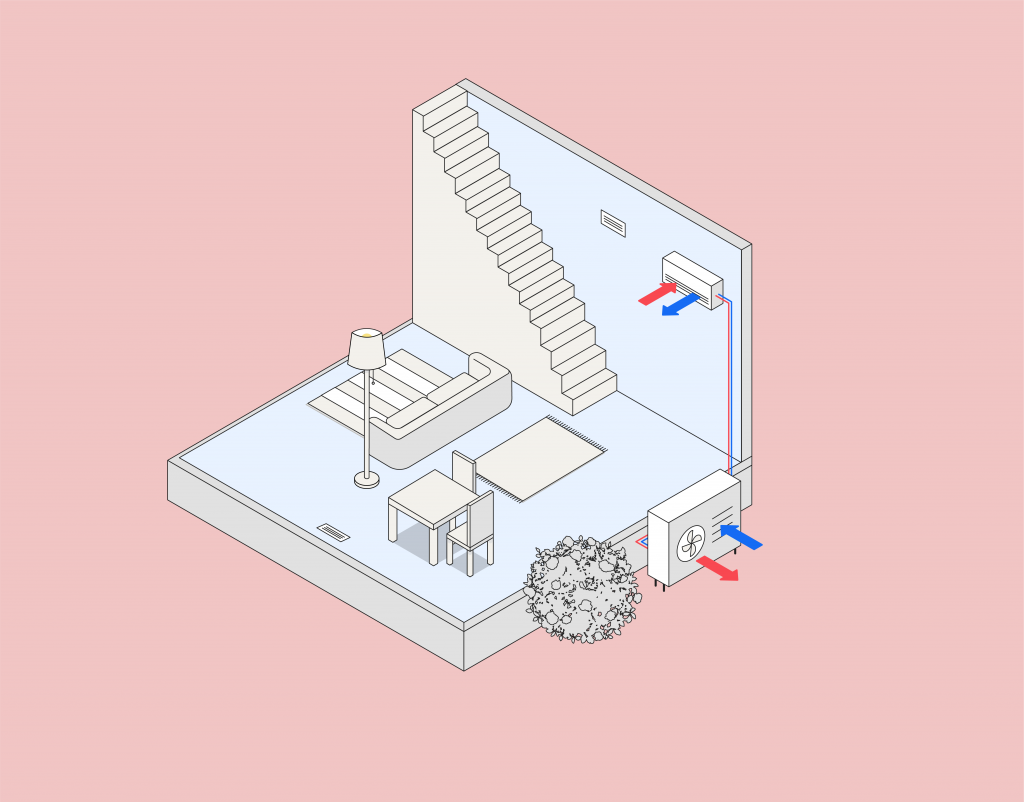
You may not have heard much about heat pumps, but that doesn’t mean they’re new. In fact, a traditional air conditioning unit is technically a heat pump—both systems work by removing heat energy from your home and transferring it to another location. The major operational difference is that the heat pump can also transfer heat into your home, so it can replace your heating system as well as your air conditioner—and do both jobs much more efficiently than traditional HVAC systems. (A heat pump also dehumidifies your home, so it’s a win-win-win.)
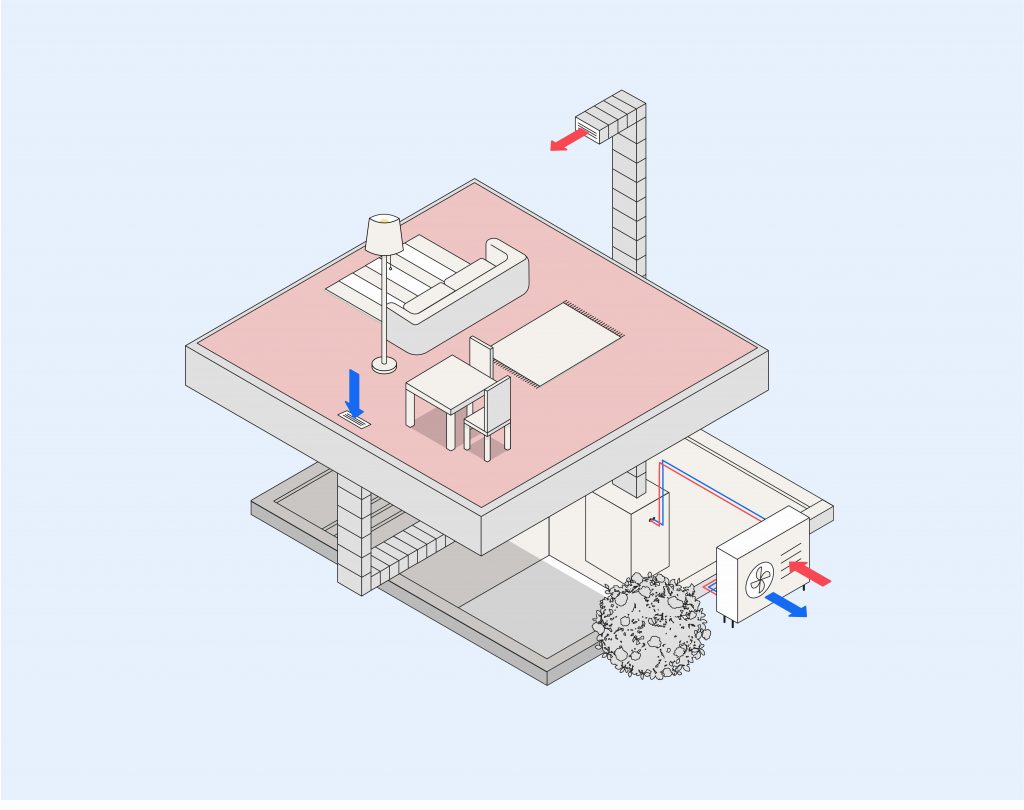
Heat pumps are common in many countries (even countries with very hot or cold climates), and they’re found in architecturally famous buildings all over the world, such as Buckingham Palace and Shanghai Tower. And heat pump demand in the US has doubled in the past decade—in 2019 alone, 3.11 million heat pumps were shipped to the US to be sold. As the movement toward clean energy gathers speed, heat pumps are becoming the new standard in American homes.
Can a heat pump cool a whole house?
Yes. In fact, it’s one of the leading HVAC technologies available for both heating and cooling your home. Depending on the type of heat pump system installed, you can even accomplish precise temperature control room by room.
How do heat pumps work?
Heat pumps (sometimes called ductless air conditioners or mini-splits—more on that later) control household climates by extracting and moving the heat in the air, but different kinds of heat pumps do that in slightly different ways. Let’s look at the two broad categories of heat pump technology.
Here are the different kinds of heat pump systems
Air-source heat pumps
An air-source heat pump system (also commonly called an air-to-air heat pump) operates just as you might assume: It moves heat from the air inside your home to the air outside of your home (and vice versa). Broadly speaking, an air source heat pump is made up of two main components which work in tandem: an outdoor condensing unit—which often looks like a traditional air-conditioning system—and an indoor air-handling unit or units.
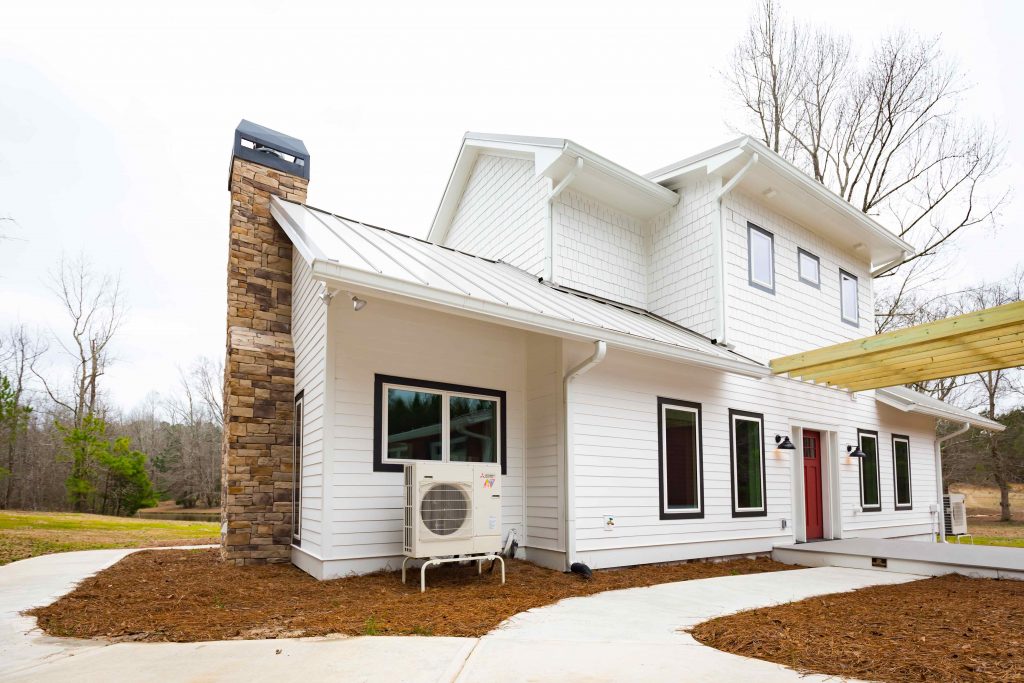
Air-to-air heat pumps are the most common in the US, and when you hear people talking about installing a heat pump, this is usually the kind they mean. That’s mostly because air-source heat pumps are the easiest kind of heat pump to install and maintain, and they provide excellent comfort and lifetime value. Air-source heat pumps are also popular because they come in both ducted and ductless versions. Both systems use an outdoor condensing unit—the major difference between ducted and ductless heat pumps is the way they handle the air inside your home.
The ductless heat pump uses small wall-mounted units (called mini-splits) to distribute and handle air. These are placed strategically throughout your home to ensure every corner feels great.
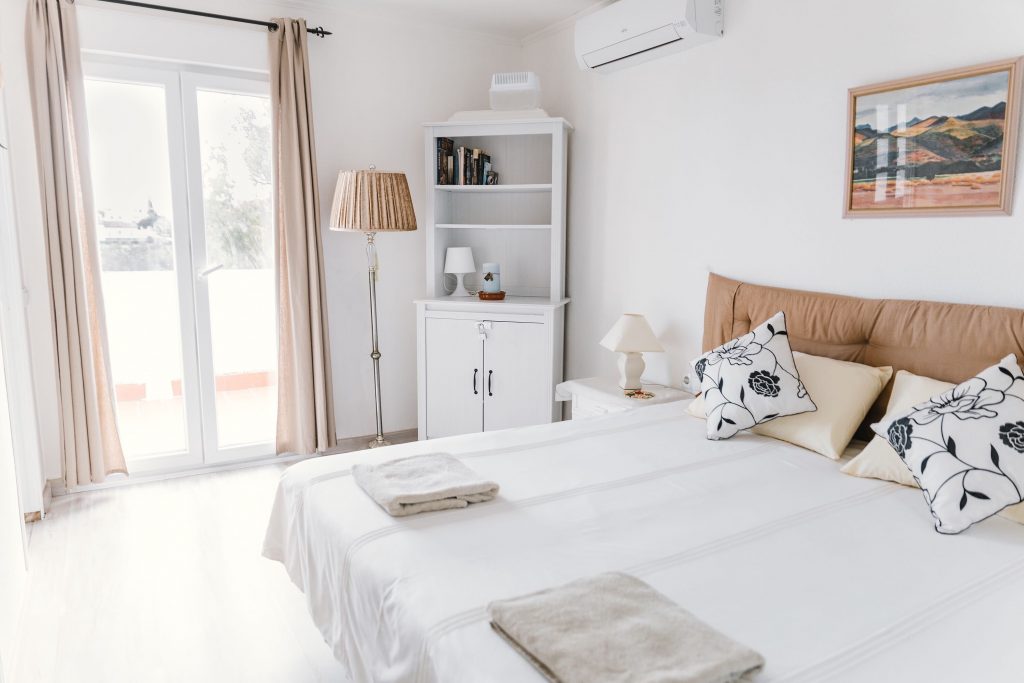
Meanwhile, ducted heat pump systems rely on a single air-handling unit called a standard split, which redirects conditioned air throughout your home via ductwork. (Since there’s only one standard-split, it’s significantly larger than a mini-split—you’ll often find it tucked away in a basement.)
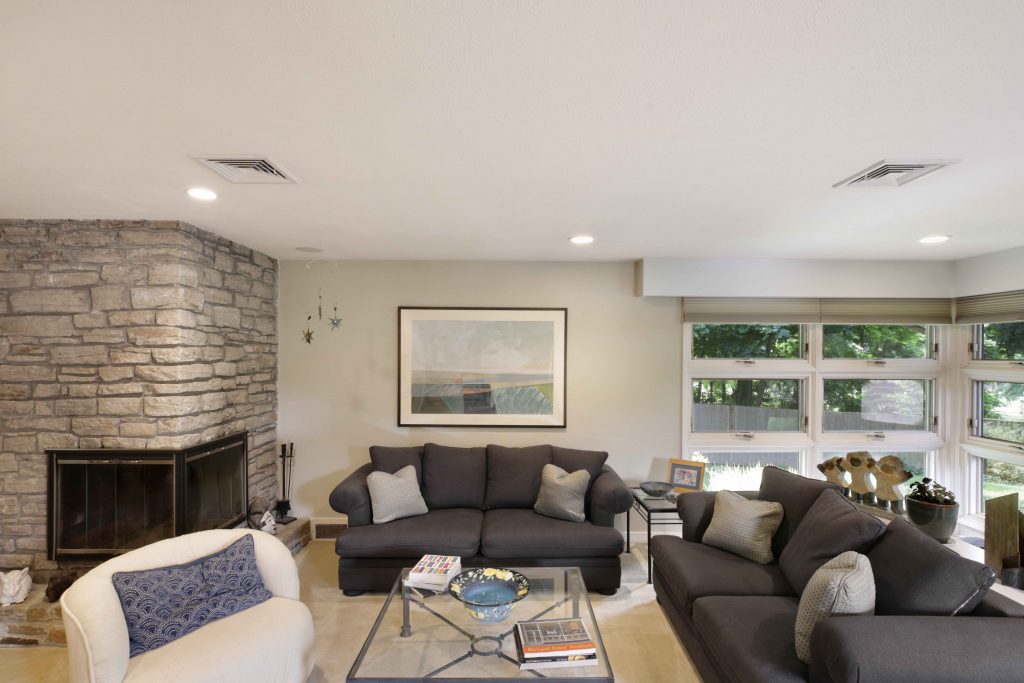
The scientific principle for both systems is the same. And whether you choose a ducted or ductless air-source heat pump, rest assured: your house will feel great. Air sealing and insulating your home at the same time as installing an air-source heat pump can make a night-and-day difference in your everyday comfort level. It’s one of the smartest HVAC strategies on the market.
Geothermal heat pumps
Geothermal heat pumps work a little differently: Instead of using an outside unit to exchange heat energy, they’re engineered to move heat to and from the earth (or a water source). These systems take advantage of the fact that the temperature of the ground and water around your home stays relatively constant, and so, once installed, they’re a bit more efficient than a standard air-source unit.
Despite some gains in efficiency, geothermal heat pumps aren’t as common in private households because they’re more complicated and expensive to install. Geothermal systems are installed under the ground or in water, so the installation process itself can be intrusive and lengthy. And servicing geothermal systems can also present challenges, since you’ll need to excavate the underground component to do certain repairs.
Geothermal vs. air source: Which is better?
For the vast majority of private homes, an air-source heat pump system provides the best mix of comfort, efficiency and value. In fact, air-to-air heat pump technology has advanced so much in recent years that the difference in efficiency between a geothermal and air-source heat pump is minimal (and there are easier, less-expensive ways to make your home more comfortable than digging up your lawn). That said, a geothermal system can be a great choice for homes over 5,000 square feet or for very large industrial buildings. Tap here to learn more about the different types of heat pumps (and some less common subtypes).
Why is a heat pump more efficient?
Heat pumps redistribute heat that’s already present in the environment. Transferring heat energy doesn’t require as much electricity as producing it
Heat pumps are extremely energy-efficient. According to the Department of Energy, installing an air-source heat pump can cut your electric bill in half (compared to baseboard heaters and furnaces)—a massive drop. So how and why do heat pumps use energy so efficiently?
The biggest reason: Heat pumps don’t produce heat at all. Instead, they redistribute heat that’s already present in the environment. Transferring heat energy doesn’t require as much electricity as producing it, so heat pumps can keep every room in the house comfortable—for a much lower energy cost.
Of course, a lower utility bill isn’t the only reason to get an energy-efficient heat pump system—conventional heating and cooling systems aren’t very kind to our planet. In New York, for example, traditional HVAC causes 32% of the greenhouse gas emissions and is responsible for a whopping 37% of the state’s energy consumption. Opting for a heat pump system instead is better for you, the earth, and future generations.
What are the advantages and disadvantages of a heat pump?
Now, let’s talk pros and cons of a heat pump. Here’s why you might consider replacing your standard heating and cooling system with a heat pump system (and a few reasons why it might not be right for you).
Let’s get the cons out of the way first.
Disadvantages of heat pumps
Cost
First, let’s address the expense. The cost of installing a quality heat pump system is roughly equal to the cost of buying both a traditional air conditioning and heating system at the same time. In some cases, it’s even more expensive, and that can deter homeowners from considering a heat pump at all.
But cost doesn’t necessarily need to be an obstacle. And when you look at the lifetime value of a heat pump, the financial picture changes. Heat pumps are the Tesla of HVAC options—you get a lot for your money. They provide fantastic energy and cost efficiency and, if they’re well-maintained, they can last for 15 years or more. Even better, Sealed can help you get a heat pump system installed at no upfront cost.
“Feel” (of the heat)
A heat pump isn’t designed to replicate the feel of heat that comes from a furnace or boiler. Instead, its continuous airflow system ensures every place in your home consistently feels warm—not hot, but warm.
Most people love how their home feels after they install a heat pump, but if you’re someone who wants their home to feel “toasty,” you might want to supplement your heat pump with an additional heating solution for the coldest days of the year (which can often be built right into or directly connected to the heat pump system).
Appearance
First of all, know that heat pump systems include a visible outdoor unit—just like with a traditional AC system. So you’ll need to make space for that unit and plan your landscaping accordingly (it’s generally pretty simple to hide it with shrubs).
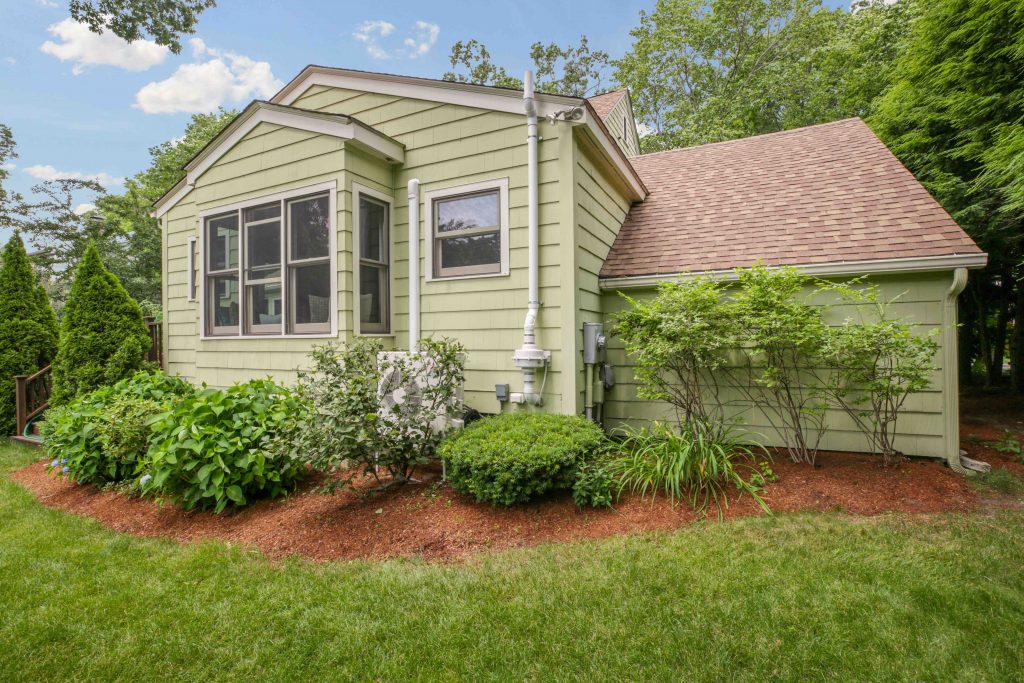
There’s nothing wrong with how a heat pump looks, but they’re also not walking down the runway at fashion week. If you select a ductless mini-split system, for example, you’ll need wall-units installed at strategic points throughout your home. These units are designed to be as unobtrusive as possible, but they’re not invisible. If you’re someone who places a premium on interior design, you’ll need to think about how to incorporate a mini-split heat pump into your aesthetic.
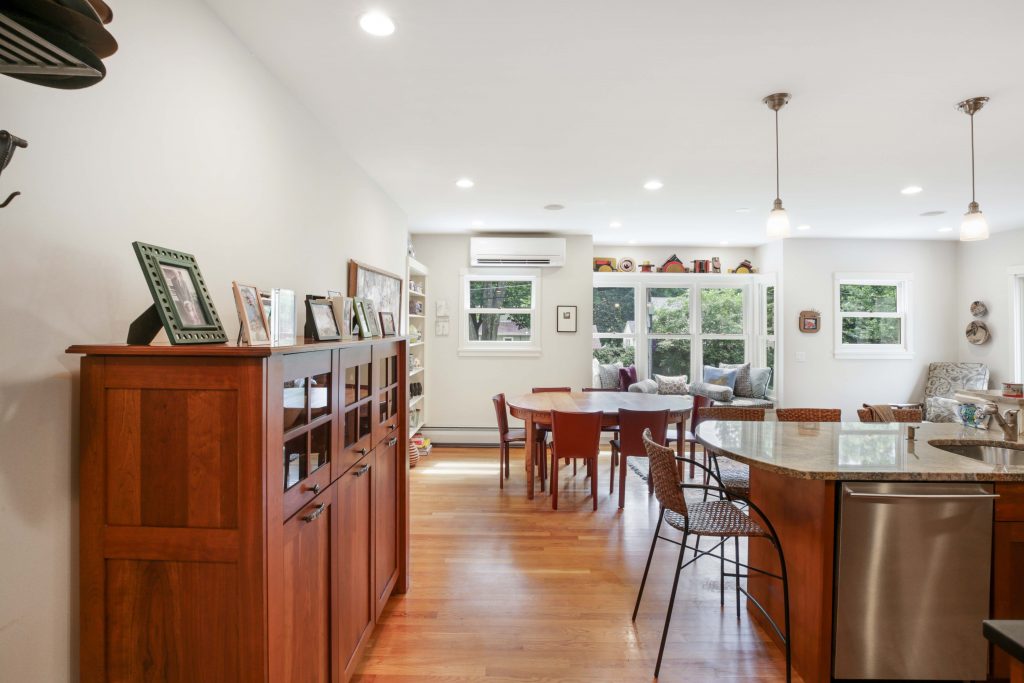
Benefits of heat pumps (a much longer list)
Better comfort
Put simply, heat pumps are a life upgrade. They make your home feel amazing. Both heating and cooling throughout your home is more even and the continuous airflow ensures that every corner of your house is comfortable. Also, if you choose a ductless mini-split system, you’ll get precise room-by-room temperature control. (Trust us: once you try it, you’ll never go back to one thermostat again. Traditional HVAC is like having one light switch for every lightbulb in your house.)
Easy to live with
Heat pumps don’t produce odd smells, they’re whisper-quiet (especially the mid- to high-range models), and they don’t require much maintenance. Once your heat pump system is installed, it’s easy to have in your home.
Healthier air
Many heat pump systems have built-in filtration to keep micro-particles and other unwanted elements out of the air you’re breathing. And, since heat pumps are fully electric and don’t burn natural gas or oil inside your home, you and your family won’t be subject to fumes or dangerous carbon monoxide off-gassing.
All-in-one system
Since a heat pump replaces both your heating and cooling systems, it simplifies your home upkeep. You can install and maintain one system instead of two (and get a better climate control result, to boot).
Flexible
If you have electricity, you can get a heat pump—and there’s a heat pump system to fit every kind of residence. Replacing a ducted HVAC system? A heat pump will fit right in and use your existing ductwork. Don’t have ductwork? Or maybe you just need better climate control on one side of your home? You need a ductless mini-split heat pump. It’s an adaptable technology with plenty of options.
Cleaner, greener energy
Heat pumps are the greenest HVAC systems currently on the market. They’re fully powered by electricity, so they generate less carbon dioxide than traditional methods powered by oil, pellets or natural gas. And heat pumps are incredibly efficient with the electricity they do use, so you’ll significantly reduce your home’s environmental footprint (and energy bill) by installing one.
Affordable
Like any quality home upgrade, a heat pump can represent a significant expense to purchase and install. But if you live in an eligible area, you can get a heat pump system installed for no upfront cost—then pay for it with the money you save on energy. With Sealed’s Climate Control plan, your monthly expenses will hardly change, but your monthly comfort will be vastly improved. It’s a great option if you’re looking for better comfort with a lower environmental footprint.
How much maintenance does a heat pump need?
A heat pump doesn’t need much maintenance—that’s one of the great benefits of heat pump technology. But there are still a few things you can do to keep your heat pump system running well.
Change the filters
You’ll need to change the filter(s) on a regular basis—once a month, if you use your system continuously, and less often if you use it sporadically.
Clear away debris
Branches, leaves and other debris that gather around your outdoor unit can significantly impact your heat pump’s ability to do its job. Heat pumps need about 2’ to 3’ of clearance all around, so keep an eye on the area and be sure to remove anything that lands around (or on top of!) your unit.
Clean outdoor coils
If your condenser coils are dirty, your heat pump won’t be able to operate efficiently. So, once or twice a year, make a point to shut off the power and clean off the coils with a special solution.
Keep snow away
If you live in a climate zone with significant snowfall, know that you’ll need to keep your outdoor unit clear of snow and ice. (A properly-installed heat pump is raised from the ground to allow for melt and drainage, but it’s still a good idea to keep the area clear.)
Get your heat pump inspected
Heat pumps are durable, but you should have yours inspected once a year by a qualified HVAC technician. They’ll be able to identify potential problems before they become severe (and they can also give you tips on how to identify issues yourself).
Do I need ducts for a heat pump system?
No. One of the benefits of heat pump technology is that it’s flexible—you can install a heat pump system with or without existing ductwork. If you already have ductwork, it’s easy to integrate a heat pump into your existing infrastructure. And if you don’t have ductwork in your home, you’ll install a mini-split heat pump system (also sometimes called a mini-split air conditioner).
Mini-splits are small wall-mounted units that send conditioned air directly into your home.
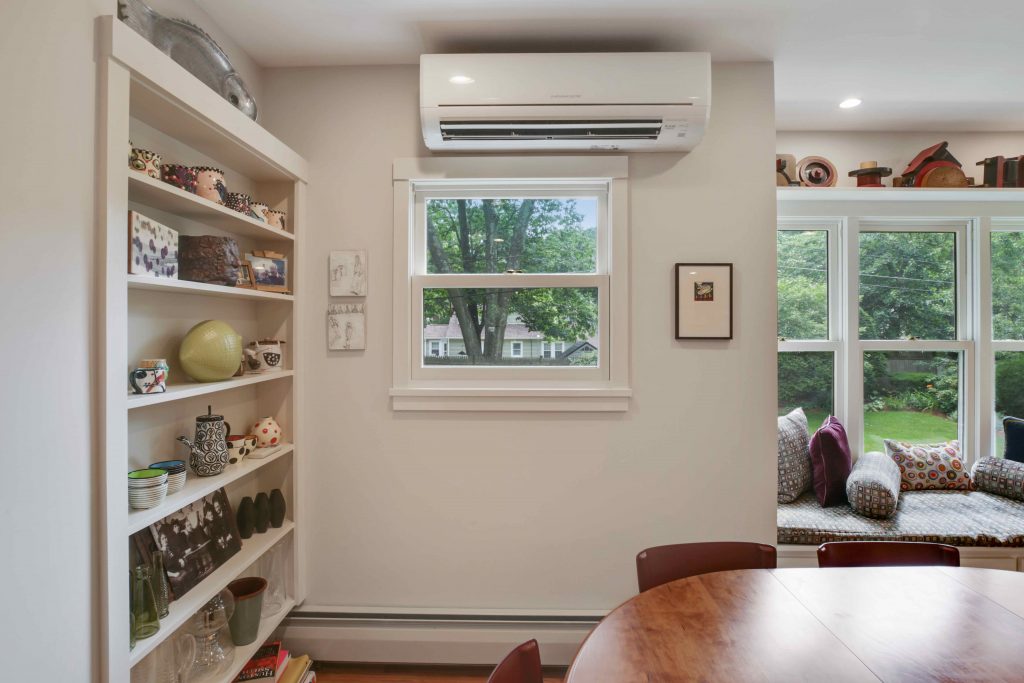
How many mini-splits do I need for my house?
The short answer? You’ll need 24,000 BTU per 1,000 square feet of space.
But let’s unpack that a little more. To talk about this, first we need to talk about the acronym BTU. It stands for British Thermal Unit and is the standard measurement in the HVAC industry. Essentially, we use BTU measurements to talk about how much heat energy a system can remove from a space. The bigger your indoor space, the more BTUs you’ll need your heat pump system to handle.
When HVAC technicians install a ducted heat pump system, they decide how many BTUs your overall system will need and select a size accordingly. But for a ductless heat pump system, that calculation is handled on a section-by-section basis. To do this, technicians ask questions: How many BTUs are necessary in your upstairs bedrooms? How big is your downstairs? Are there any major obstructions or barriers that interfere with airflow?
So figuring out how many mini-splits you’ll need can be a pretty complex calculation, but here’s a general rule of thumb: For every 1,000 square feet of space in your home, you’ll need system capacity (combined mini-splits or central) that’s capable of handling 24,000 BTUs.
All that said, planning a mini-split strategy is a job best left to professionals—there are nuances for certain spaces of your home, such as high-traffic areas, kitchens or rooms with many windows. (And if you go through Sealed, our technicians will figure all of this out for you when they design your new system.)
How much does a heat pump cost?
The cost of a heat pump system can vary based on the size of your house, layout of your space, where you live and whether or not you’ll use your existing ductwork or install a ductless mini-split system. You’ll also need to consider the cost of professional installation. Purchasing a climate control system for your home is a significant expense in any situation, and a heat pump system is no different.
That said, the economics of installing a heat pump make sense. First of all, if you live in an eligible area you can get your heat pump system installed for no upfront cost. (You’ll pay with the money you save on energy—and if you don’t save on energy, you won’t have to pay.)
But even if you pay for your heat pump out-of-pocket, they’re generally a great investment. They significantly reduce your energy costs (especially if you also properly seal and insulate your home) and they’re relatively simple to maintain. Given that your heat pump is a complete HVAC solution that will replace both your heating and cooling system, it’s an excellent lifetime value for the money.
Want to find out if heat pumps are right for your home? Give us a call at 844-265-2164 -our home comfort specialists are available to talk it through.